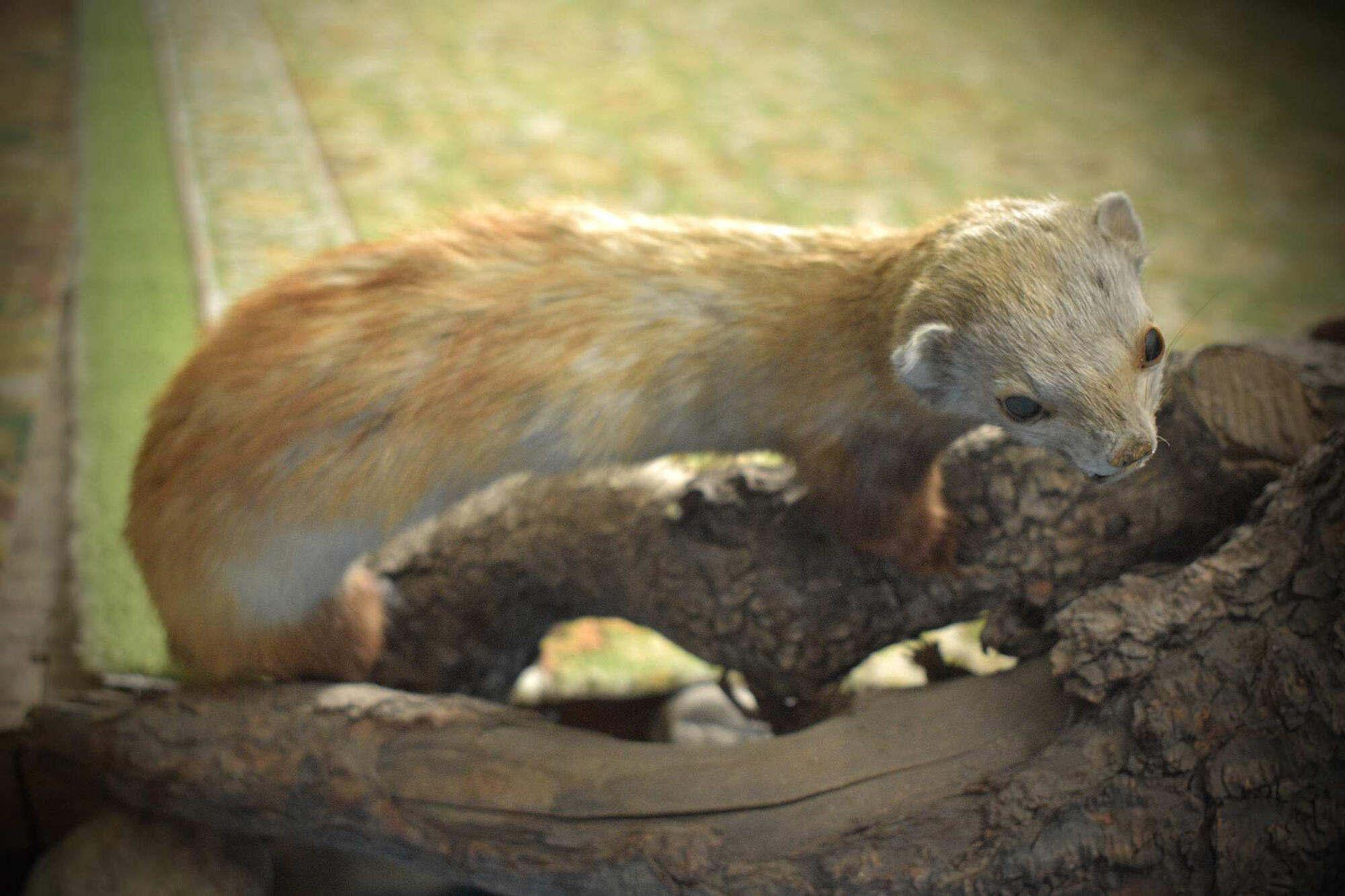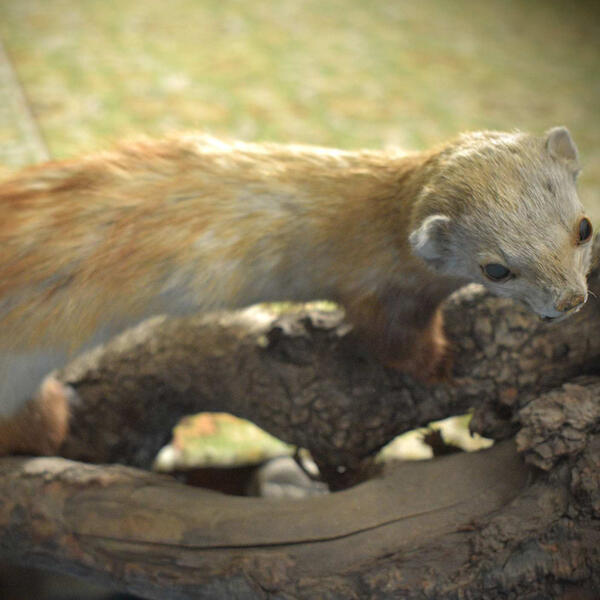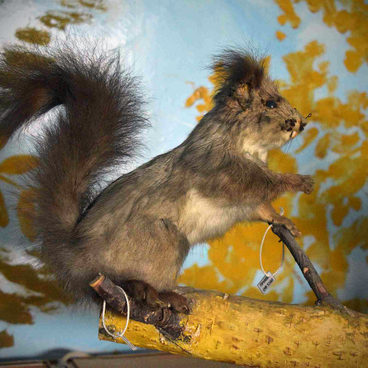The European polecat is a carnivorous mammal of the Mustelidae family. Its closest ‘relatives’ include stoats, European minks and common weasels. Humans domesticated this valiant predator a long time ago. For more than one century, polecats have been living in households, becoming many people’s favorite pets. Its weight can reach 1.5 kilograms. The animal’s body is typical for mustelids: it is elongated, long and thin. European polecats are very flexible and graceful. Their limbs, in comparison to its long body, look short and stumpy, but they are very strong and sturdy, and are equipped with sharp claws, which help the animal climb any tree and create underground passages expertly. Its coat is pleasant to the touch and fluffy. Closer to their base, its hairs are noticeably lighter, while the ends are darker in shade having changed the hue along their length. In autumn, when the molt is almost complete, the European polecat’s furry coat starts to glisten and shimmers gracefully in the sun. Its beautiful, long and furry tail is characteristic to this species. There are scent glands near it, which secrete a smelly substance to help the animal cope with its enemies. European polecats love forests and tend to live near ravines and water bodies. Sometimes, they move to villages and settlements, and choose to live near humans. These carnivores do not travel deep into the woods and prefer to inhabit the edges of forests where there is no dense vegetation. There are European polecats in mountainous regions. In fact, they can reach heights of several thousand meters above sea level.
These animals inhabit familiar territories, which they prefer not to leave. This species likes to live in abandoned burrows of European badgers and foxes. They do not often make their own dens in the earth. European polecats can also inhabit haystacks as well as rotting hollowed out trees and not only underground homes. Where these animals live is determined by the landscape they choose to inhabit. The predator eats all types of rodents, various insects, reptiles and birds. Hunting lizards and even poisonous snakes is not that big of a challenge for this carnivore. European polecats also enjoy eating adult as well as baby birds. The animals also love feeding on bird eggs, hence they never miss out on an opportunity to destroy a nest. These mammals, by their nature, are very energetic, agile and inquisitive. In the wild as well as in captivity or within households, they prefer hunting and being active at dusk. European polecats are excellent tree climbers and splendid swimmers. When they are not asleep, these animals are full of energy and simply cannot stay in one place. The mammal prefers to live only within one territory of its own. This species lines its burrows, which it either finds abandoned or digs out, with grass and leaves. Sometimes (in winters), these animals can live in people’s barns, storerooms and basements. In farming communities, European polecats have a reputation of being real troublemakers. After all, they often steal hens and rabbits right from people’s front yards. Such incidents usually happen during famines but not always. In the wild, the European polecat’s enemies can be said to include foxes, wolves, wild cats, large birds of prey, big poisonous snakes, owls and golden eagles.
These animals inhabit familiar territories, which they prefer not to leave. This species likes to live in abandoned burrows of European badgers and foxes. They do not often make their own dens in the earth. European polecats can also inhabit haystacks as well as rotting hollowed out trees and not only underground homes. Where these animals live is determined by the landscape they choose to inhabit. The predator eats all types of rodents, various insects, reptiles and birds. Hunting lizards and even poisonous snakes is not that big of a challenge for this carnivore. European polecats also enjoy eating adult as well as baby birds. The animals also love feeding on bird eggs, hence they never miss out on an opportunity to destroy a nest. These mammals, by their nature, are very energetic, agile and inquisitive. In the wild as well as in captivity or within households, they prefer hunting and being active at dusk. European polecats are excellent tree climbers and splendid swimmers. When they are not asleep, these animals are full of energy and simply cannot stay in one place. The mammal prefers to live only within one territory of its own. This species lines its burrows, which it either finds abandoned or digs out, with grass and leaves. Sometimes (in winters), these animals can live in people’s barns, storerooms and basements. In farming communities, European polecats have a reputation of being real troublemakers. After all, they often steal hens and rabbits right from people’s front yards. Such incidents usually happen during famines but not always. In the wild, the European polecat’s enemies can be said to include foxes, wolves, wild cats, large birds of prey, big poisonous snakes, owls and golden eagles.



